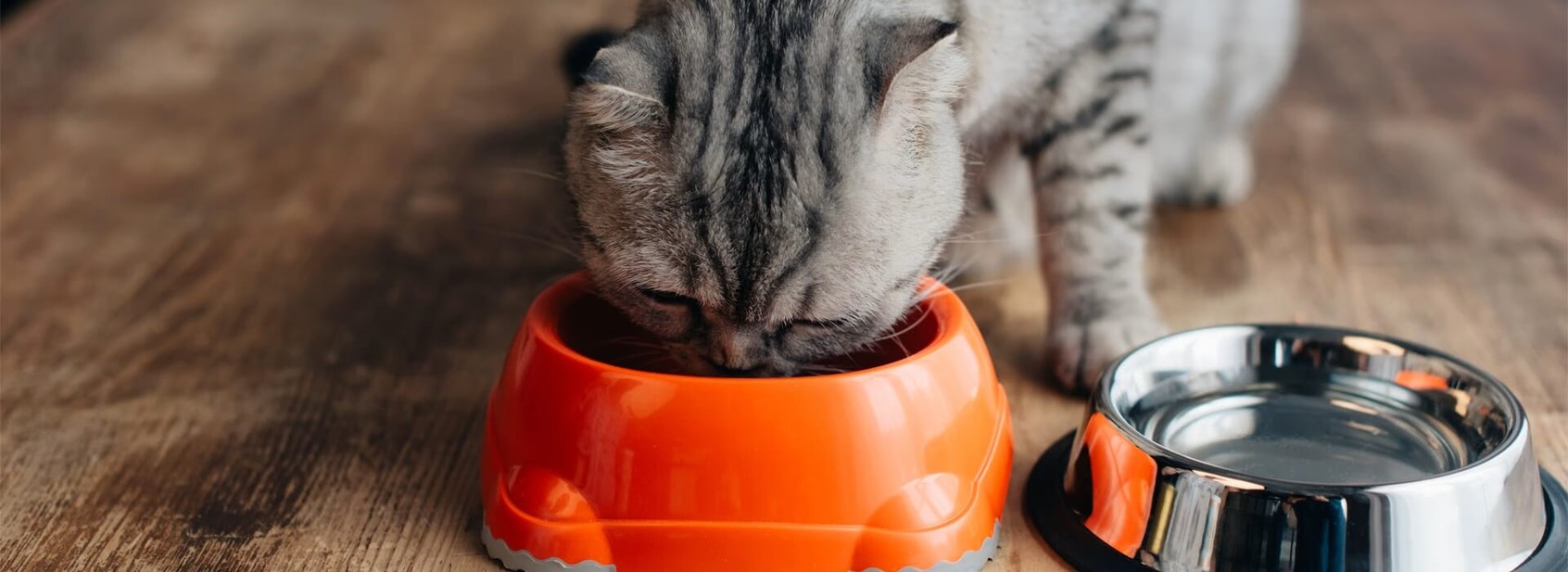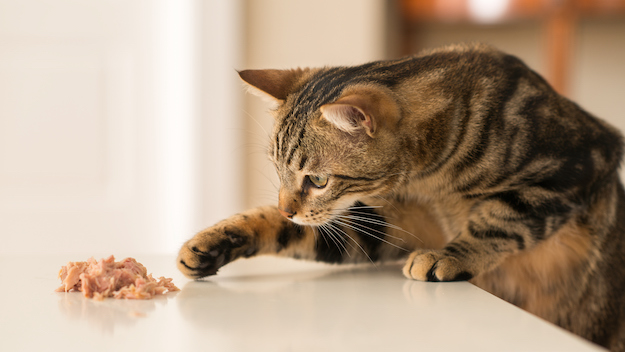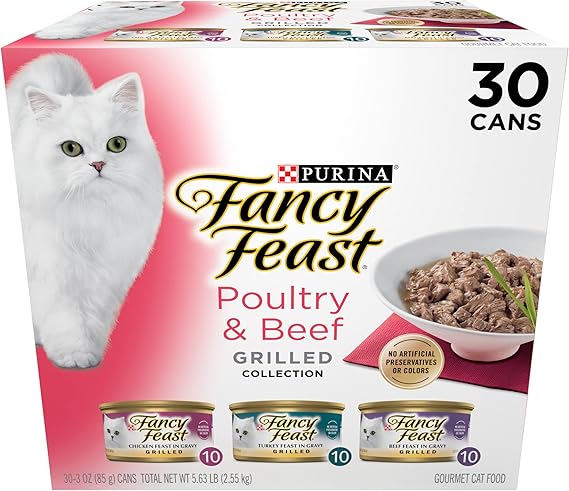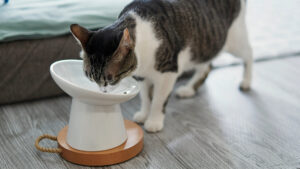
Understanding Wet Food for Cats
When considering our feline friends’ diets, one question often arises: should I choose Cat Diet Wet Food or stick with dry? As a proud cat owner myself, I’ve found that wet food offers some compelling advantages that can significantly impact my cat’s health and well-being. Let’s delve into the benefits of wet food over dry food, as well as the nutritional value of high-quality wet food.
The Benefits of Cat diet wet food over Dry Food
One of the most significant benefits of wet food is its moisture content. Cats, being descendants of desert-dwelling animals, often have a low thirst drive. By incorporating wet food into their diet, they can stay hydrated more easily, which is crucial for their kidney health. My cat, Bella, had a few urinary issues until I switched to a high-quality wet food — instantly noticeable improvement!
Here are some other benefits of wet food:
- Higher Protein Content: Wet food typically contains more protein than dry kibble, which is essential for maintaining strong muscles and overall warmth in our cats.
- Better Palatability: Many cats find wet food infinitely more appealing. Its aroma and texture often entice even the pickiest eaters.
- Weight Management: The nature of wet food can help cats feel fuller for longer, which is a boon for maintaining a healthy weight.
Nutritional Value of High-Quality Wet Food
Choosing high-quality wet food isn’t just a matter of preference; it’s about ensuring your cat gets the best nutrition possible. The nutritional profile of wet food should ideally include:
- Real Meat as the First Ingredient: This is vital for providing the essential amino acids cats need.
- Fruits and Vegetables: Some wet foods incorporate wholesome ingredients like peas or carrots, offering vitamins without harmful fillers.
- No Artificial Preservatives or Colors: Look for products that are natural and free from unnecessary additives.
By selecting wet food with these elements, I’ve noticed a significant boost in Bella’s energy levels and overall vitality. It’s clear that investing in quality food pays off!
In conclusion, both the moisture content and the rich nutritional makeup of wet food make it a fantastic choice for our cats. However, it’s imperative to choose wisely, as not all wet foods are created equal. As we move forward, we’ll explore how to select high-quality wet food for your furry companion.

Selecting High-Quality Cat Diet Wet Food
Having established the benefits of wet food for our feline friends, the next step is to ensure that we choose the best option available. Not all wet cat foods are created equal, and understanding how to read labels and identify key ingredients can make all the difference in your cat’s health.
Reading Labels: Key Ingredients to Look For
When I first switched Bella to wet food, I was overwhelmed by the variety on the shelves. However, I quickly learned that reading labels is essential. Here are some key ingredients I always search for:
- Real Meat as the Main Ingredient: Look for wet food that lists a specific meat (like chicken, beef, or fish) as the first ingredient. This ensures that your cat gets the protein they need.
- Animal Protein Sources: Ingredients such as chicken meal or fish meal are concentrated and pack more protein than fresh meat, offering great nutritional value.
- Balanced Nutrients: Aim for wet foods that provide a balanced profile, including taurine, which is crucial for heart and vision health.
- Healthy Fats: Look for natural fats like chicken fat, which can be a good source of energy and necessary fatty acids.
I remember choosing a can packed with wholesome ingredients that not only seemed nutritious but also received a pawsitive response from Bella!
Avoiding Harmful Additives and Fillers
While figuring out what to embrace, it’s equally important to recognize what to avoid. Certain additives and fillers can harm your cat, and I make it a priority to steer clear of them:
- Artificial Preservatives and Colors: Ingredients like BHA, BHT, or ethoxyquin should raise red flags. Natural preservatives like tocopherols are better options.
- By-products and Fillers: Avoid foods containing “meat by-products” which often don’t guarantee quality. Also, fillers like corn and soy provide little nutritional value.
- Sugar and Salt: Beware of added sugars or excessive salt, as these can contribute to health issues over time.
Using these guidelines, I can now confidently pick out high-quality wet food that enriches Bella’s diet. It’s all about making informed choices that keep our furry companions happy and healthy. Next up, we’ll discuss how to introduce wet food into your cat’s diet without any hiccups!

Introducing Wet Food into Your Cat’s Diet
Now that we’re armed with knowledge on selecting high-quality wet food, it’s time to discuss the next big step: transitioning your cat from dry to wet food. This process requires some patience and understanding, especially since some cats can be quite particular about their meals.
Transitioning from Dry to Wet Food
When I decided to introduce wet food to Bella, I was cautious. I didn’t want to upset her stomach or throw her off her feeding routine. Hence, I adopted a gradual approach to make the transition smoother. Here’s a simple strategy I followed:
- Start Slow: For the first few days, mix a small amount of wet food with her regular dry food — about 25% wet to 75% dry.
- Increase Gradually: Each day, slowly increase the proportion of wet food. After a week, I had Bella eating about 50% wet food to 50% dry.
- Observe Preferences: Cats have unique tastes! If Bella showed a distinct preference for the wet food, I felt encouraged to increase it further.
- Consistency is Key: Feeding at the same time each day can help create a routine that your cat learns to expect.
Monitoring Your Cat’s Response and Health
As Bella adjusted to her new diet, monitoring her response was crucial. I carefully watched for any signs of discomfort or changes in behavior. Here are some aspects to keep an eye on:
- Digestive Responses: Pay attention to your cat’s litter box visits. Healthy stool consistency is a good indicator that the transition is going smoothly.
- Energy Levels: Increased energy and activity can mean that your cat is thriving on the new diet. Bella became more playful than she had ever been!
- Weight Changes: Since wet food can be more calorically dense, keep an eye on your cat’s weight. Regular vet check-ups can help you track this.
- Hydration: With wet food, hydration levels typically improve, so you might notice less frequent trips to the water bowl.
With these considerations in mind, I could confidently transition Bella to her new diet without any hiccups. Monitoring her health not only reassured me but also ensured that she enjoyed the benefits of her new wet food diet. In the next section, we will delve into exploring the exciting variety available in cat cuisine!

Variety in Cat Cuisine ‘Cat diet wet food’
Now that Bella has comfortably settled into her new wet food diet, I’ve realized just how important variety is when it comes to cat cuisine. Cats can be finicky eaters, and introducing different flavors and textures can make mealtime an exciting experience rather than a mundane routine.
Exploring Different Flavors and Textures for Cat diet wet food
One of the joys of being a cat owner is watching Bella sample a variety of wet foods. After the initial transition, I ventured into an array of flavors and textures that kept her palate intrigued. Here are some options I explored:
- Protein Variety: Switching between protein sources like chicken, turkey, beef, and fish not only excites her taste buds but also provides different essential nutrients.
- Texture Diversity: Wet foods come in various textures, such as pâté, chunks in gravy, or broth, which makes it fun for Bella. One day, she loves the creamy pâté, while the next, she might prefer chunks with gravy.
- Special Recipes: Look for gourmet offerings or limited recipes that include unique ingredients, like rabbit or venison, for a special treat. Bella’s eyes light up whenever she gets something new!
It’s amazing to see how different flavors can invigorate her appetite, and I always keep a few options on hand to rotate throughout the week.
Rotating Wet Food Options for a Balanced Diet
Rotating wet food options is not just about variety; it’s a crucial step in providing balanced nutrition. By continuously varying Bella’s diet, I’ve ensured she receives a broader spectrum of nutrients. Here are some practical tips I use:
- Create a Weekly Rotation: I have a chart where I designate different wet food flavors for each day. This way, she can experience diversity without any repeats too quickly.
- Watch for Reactions: After introducing a new flavor, I observe how Bella reacts. If she thrives and enjoys it, I’ll consider bringing that flavor into the regular rotation.
- Balance is Key: Most importantly, I try to ensure that no matter the flavor, high-quality, nutrient-rich ingredients are a constant in her diet.
By embracing variety, I’ve seen a noticeable difference in Bella’s enthusiasm for meals and her overall health. In our next section, we will discuss special considerations for a wet food diet that caters to specific dietary needs and restrictions.

Special Considerations for Cat diet wet food
As I explored the fascinating world of wet food for Bella, I discovered that incorporating variety and excitement is essential, but there are also some special considerations to keep in mind, especially regarding dietary restrictions and allergies. For many cat owners, understanding these needs can make a world of difference in a cat’s health and well-being.
Catering to Dietary Restrictions and Allergies
Not every cat can enjoy the same types of food, as some may have specific dietary needs or allergies that require careful attention. When I first adopted Bella, I wasn’t aware of her sensitivity to certain proteins, which led to unnecessary digestive distress. Here’s what I learned about catering to dietary restrictions:
- Identify Allergies: Common allergens for cats include chicken, beef, dairy, and grains like wheat. If your cat shows signs of itching, gastrointestinal upset, or changes in behavior after eating, it might be time to consult your veterinarian or consider an elimination diet to pinpoint the source.
- Seek Limited Ingredient Diets: For cats with food sensitivities, limited-ingredient wet foods can be a lifesaver. These formulas often contain a single source of protein and fewer ingredients, making it easier to identify and manage allergies.
- Consult Your Veterinarian: Always involve your vet when making significant changes to your cat’s diet. They can recommend appropriate wet food brands based on your cat’s health status, age, and any known allergies.
- Gradual Introduction: If Bella needs to switch to a new, hypoallergenic wet food, I introduced it slowly, mixing it with her old food to monitor her reaction. This way, I could ensure there were no adverse effects.
- Read Labels Carefully: Pay close attention to ingredients, especially if your cat has specific restrictions. Look for foods labeled “grain-free” or “hypoallergenic” to align with their dietary needs.
By being proactive in catering to Bella’s dietary restrictions, I’ve been able to help her live a healthier, more comfortable life. In the next section, we will discuss the importance of consulting with a veterinarian for dietary advice tailored to your unique furry companion.

Consulting with a Veterinarian for Dietary Advice
Having navigated through the multitude of options and factors impacting Bella’s wet food diet, I’ve learned that consulting with a veterinarian is perhaps one of the most essential steps to ensure that my feline friend receives the best possible nutrition. Professional dietary advice can be incredibly beneficial, especially when making significant changes to your cat’s diet.
The Importance of Professional Guidance
When I first transitioned Bella to a wet food diet, I was filled with excitement but also a bit of confusion. That’s when I decided to book an appointment with our vet. Here’s what I discovered about the value of seeking professional advice:
- Personalized Nutrition Plans: Every cat is unique, and a veterinarian can help create a nutritional plan tailored specifically to your cat’s age, weight, breed, and health conditions. In Bella’s case, my vet recommended a specific brand that suited her sensitive stomach.
- Health Assessment: Regular vet visits allow for thorough health assessments, enabling you to identify potential issues related to diet. If your kitty exhibits odd behaviors or gains weight, a vet can promptly evaluate the situation.
- Expert Recommendations: Vets often stay up to date on the latest research and best practices in feline nutrition. During our appointment, my vet provided insights into high-quality brands and what to look for on labels — advice that has been invaluable in my ongoing purchases.
- Monitoring Weight and Health: If you’re transitioning to a wet food diet, your vet can help you monitor your cat’s weight and overall health, ensuring that any changes are beneficial instead of detrimental.
When to Seek Help
While it’s great to enjoy exploring food varieties for Bella, I learned to seek professional help if:
- You notice sudden changes in your cat’s behavior or health after changing their diet.
- Your cat has existing health conditions that require careful dietary management.
- You’re unsure about ingredient choices or how to introduce new foods safely.
In conclusion, consulting with a veterinarian reinforces your commitment to your cat’s health, leading to informed dietary decisions that cater to their unique needs. As we round off this exploration, it’s clear that combining your knowledge with professional guidance creates a winning formula for your beloved feline companion.

